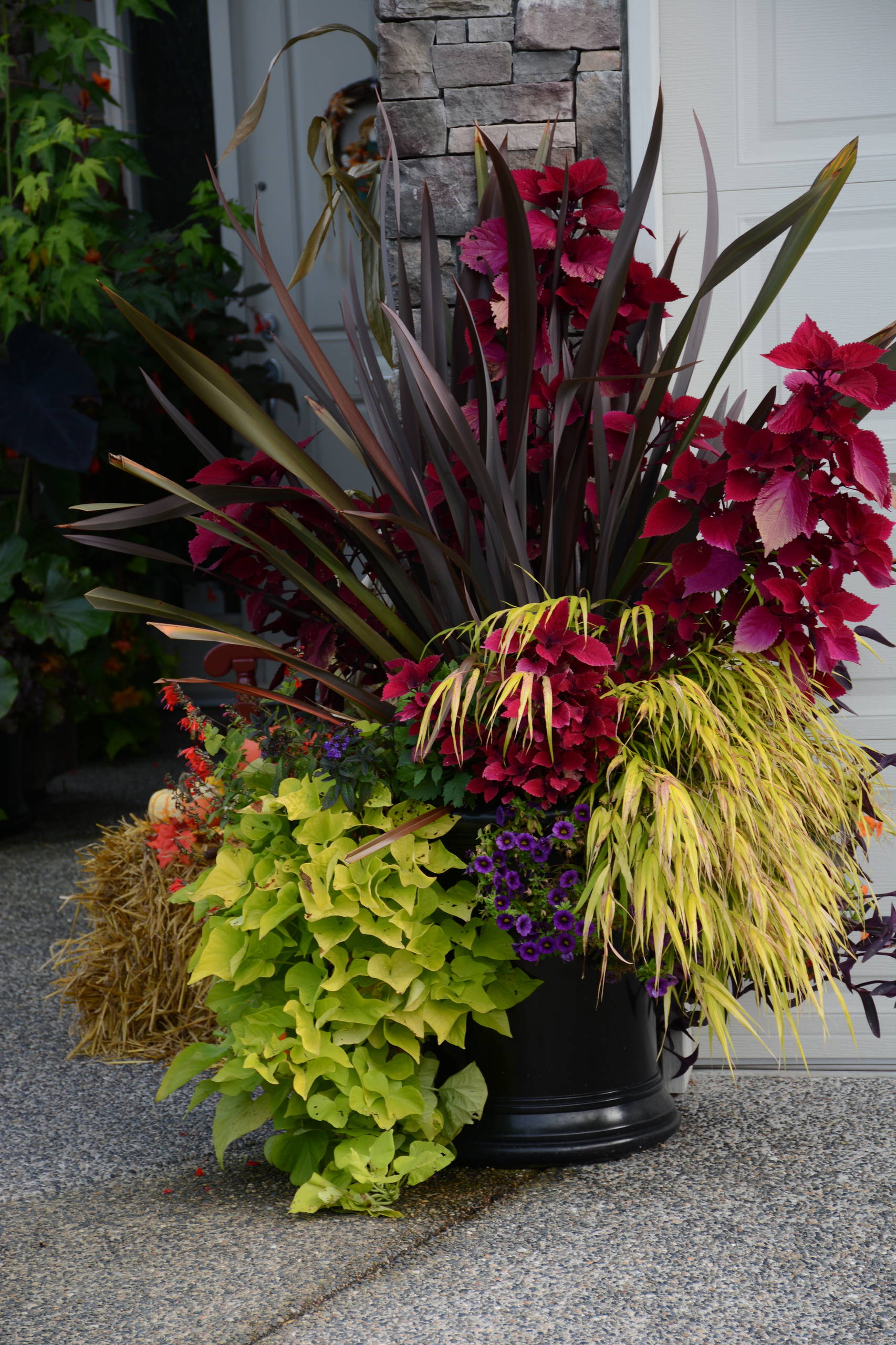 Glenna Partridge Garden Design
Glenna Partridge Garden Design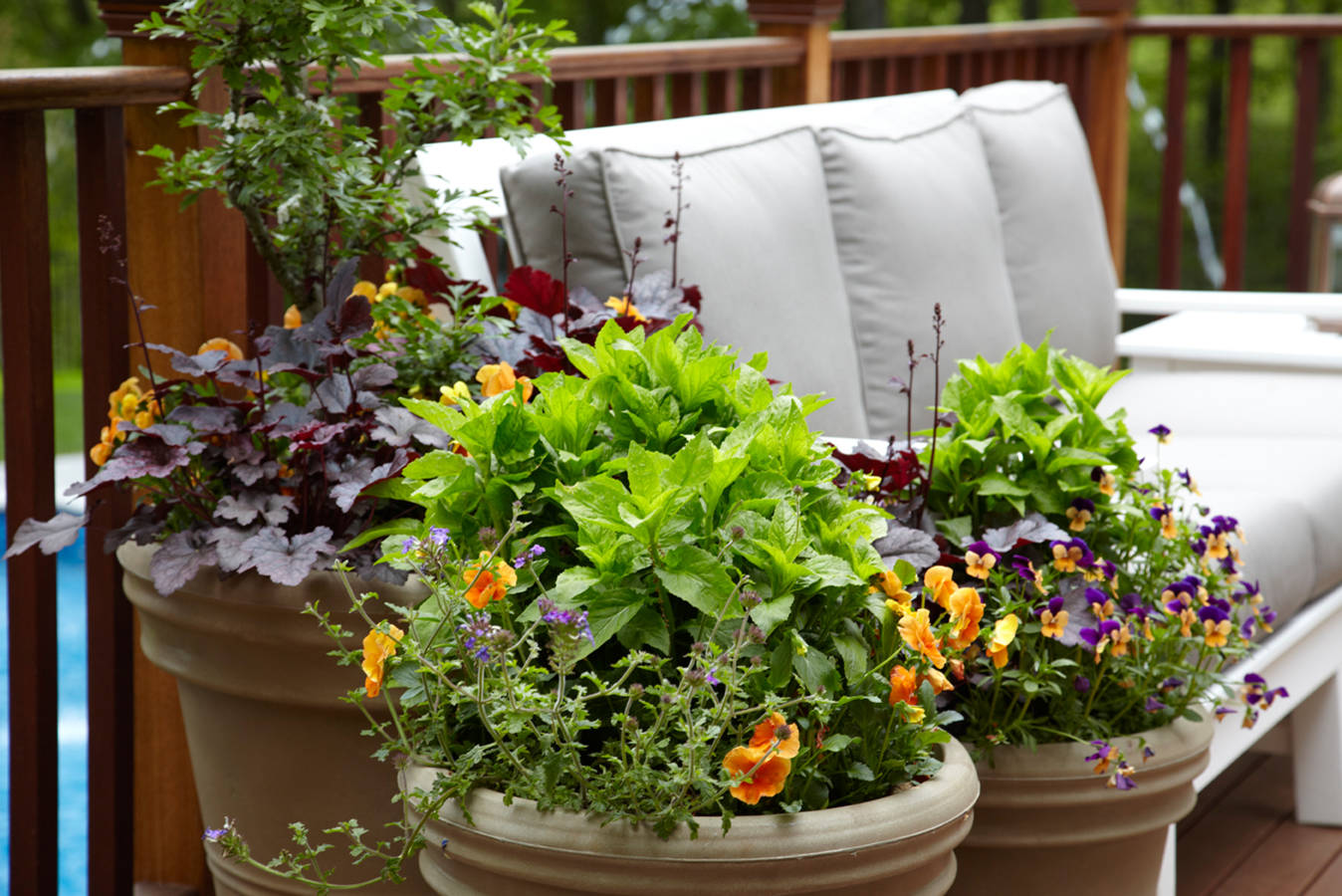 Westover Landscape Design
Westover Landscape DesignAfter removing summer annuals past their prime, fill in the gaps with cool-season bloomers in fall colors. Although they may look tender and delicate, pansies are actually some of the most cold-tolerant annual flowers. When planted now while soils are warm, they’ll bloom from fall to spring. Don’t wait too long, though — pansies planted late, in soils with temperatures below 45 degrees Fahrenheit (7.2 degrees Celsius), tend to have stunted growth and fewer flowers.
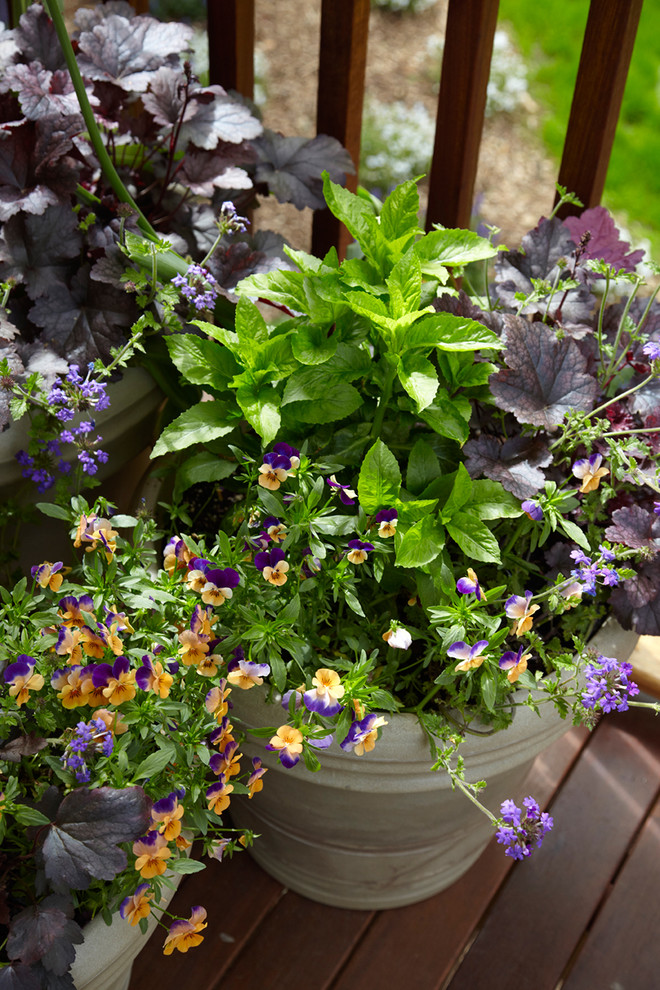 Westover Landscape Design
Westover Landscape Design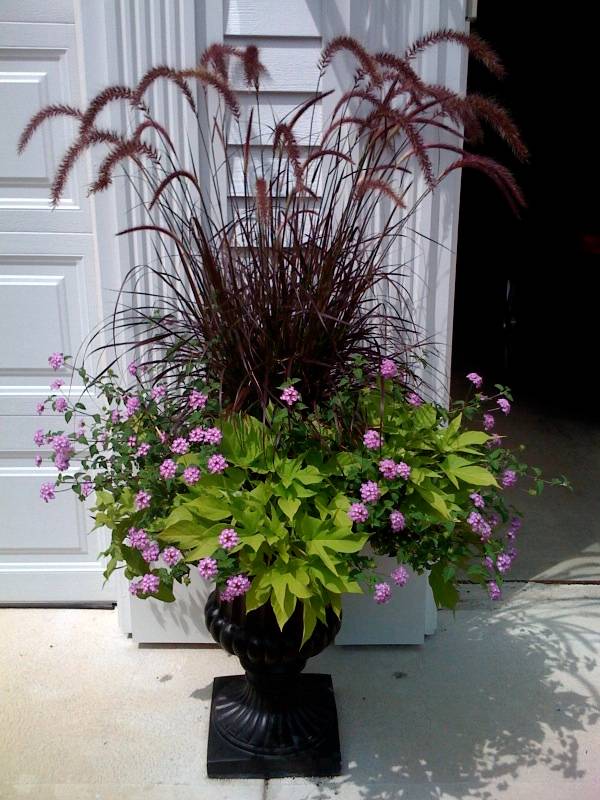
To give some serious pizazz to existing container gardens by adding just one plant, reach for purple fountain grass (Pennisetum setaceum ‘Rubrum’), as shown in this design by Michelle Jacoby, Changing Spaces.
The dramatic ornamental grass can reach 3 to 5 feet tall and 2 to 4 feet wide (although usually smaller in containers) with a vase-like shape topped with fuzzy purple seed heads. Although often grown as an annual in colder climates, it will continue to look striking throughout fall.
Note: ‘Rubrum’ does not reseed as other Pennisetums do, making it a good variety to plant in the home garden.
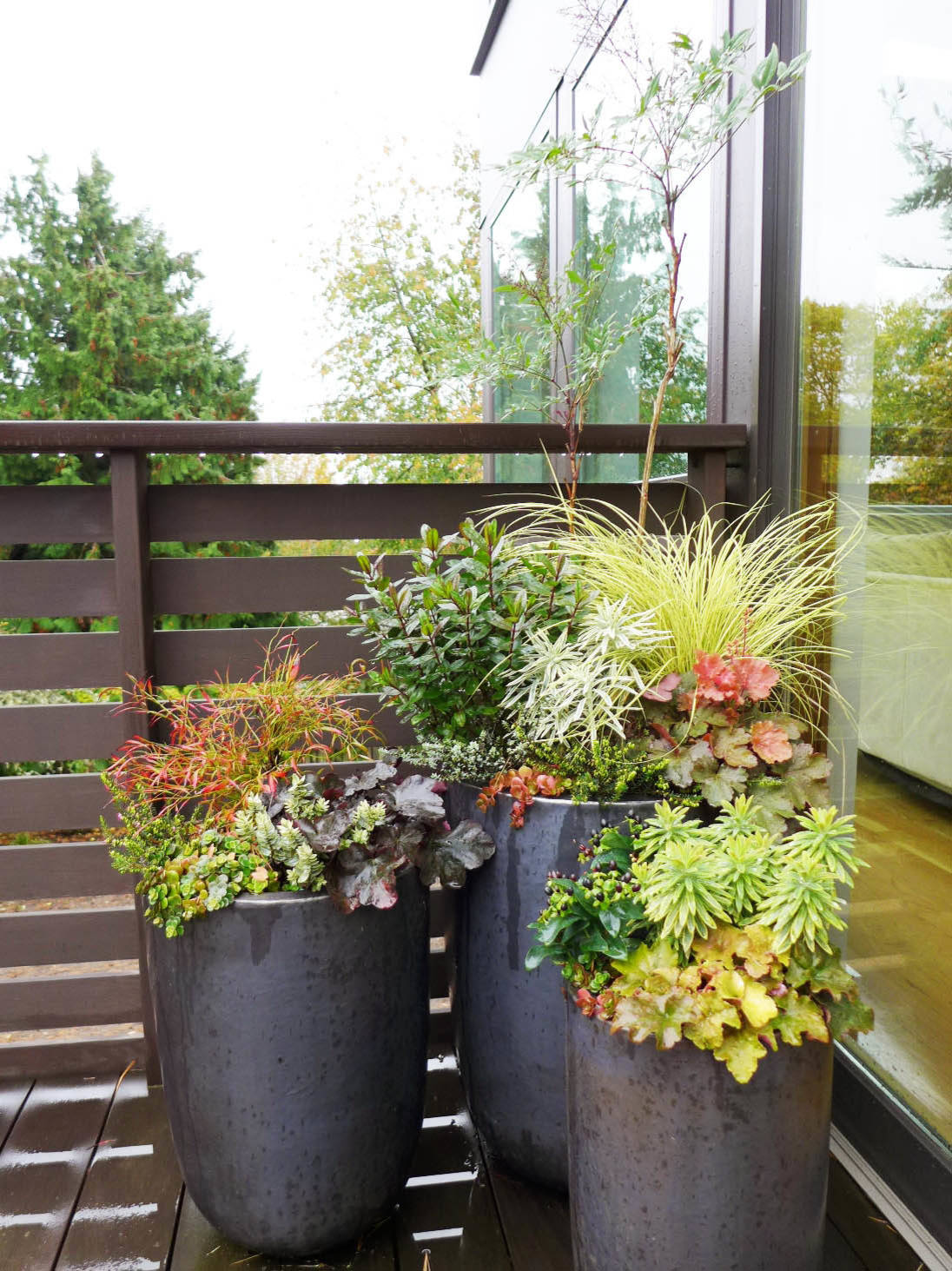 Olander Garden Design
Olander Garden DesignConsider adding one or more textural ingredients like plants with berries, twiggy branches, grassy leaves or broad foliage. This fall-themed trio by Olander Garden Design in Seattle is a textural feast with feathery grasses, the ruffled bronze and gold leaves of coral bells (Heuchera spp.), twiggy heavenly bamboo (Nandina domestica), small-leaved heather and dark hypericum berries (Hypericum spp.)
Even easier: Add texture without planting by sticking dried curly willow branches or ornamental seedpods from floral displays into the pot.
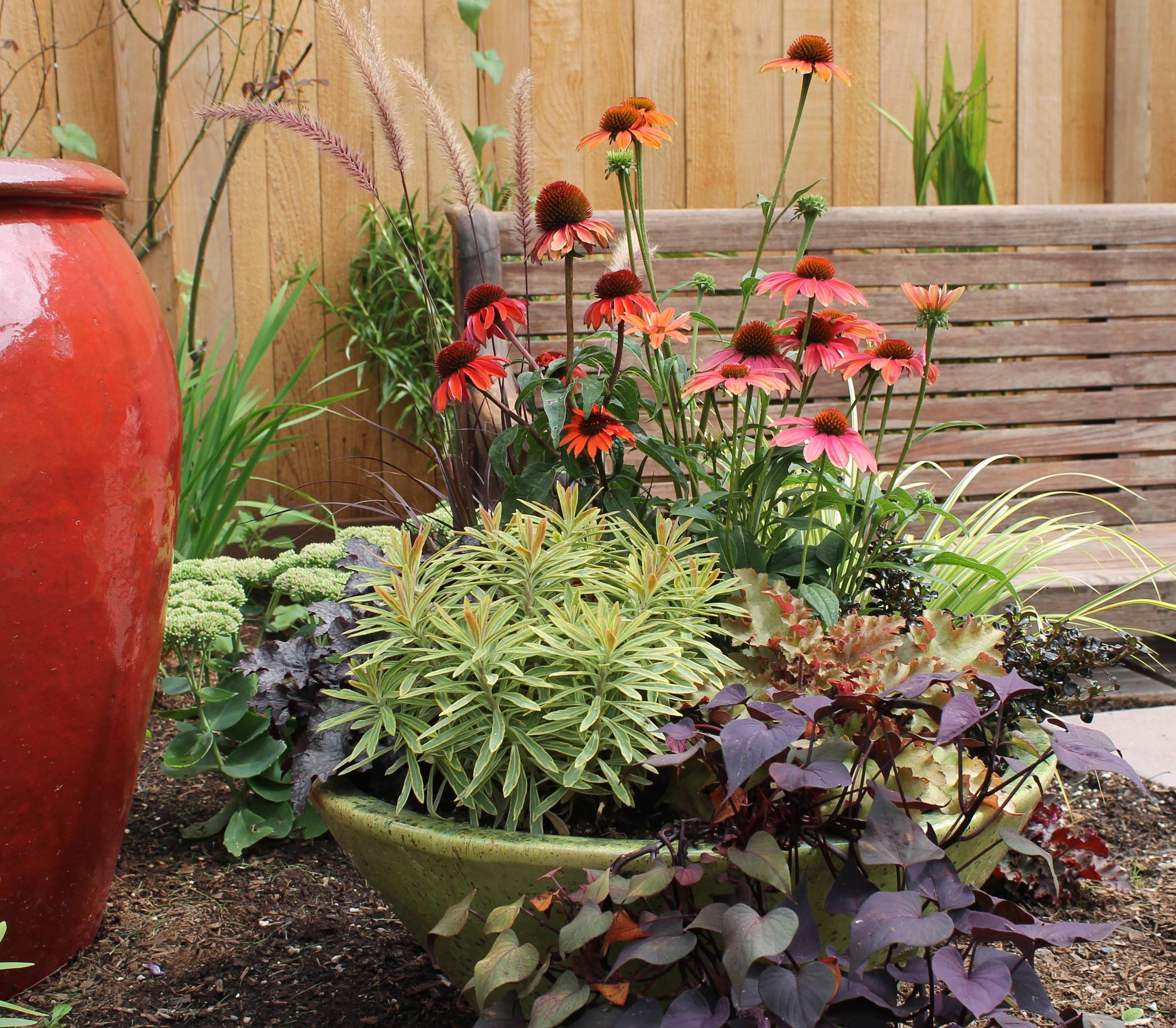 Olander Garden Design
Olander Garden DesignNurseries are packed this time of year with late-summer and fall-blooming perennials. Just adding a few coneflowers (Echinacea spp.), black-eyed Susans (Rudbeckia hirta) or heirloom chrysanthemums can transform existing container displays. The flowers will add color through fall and come back in spring for another bloom period.
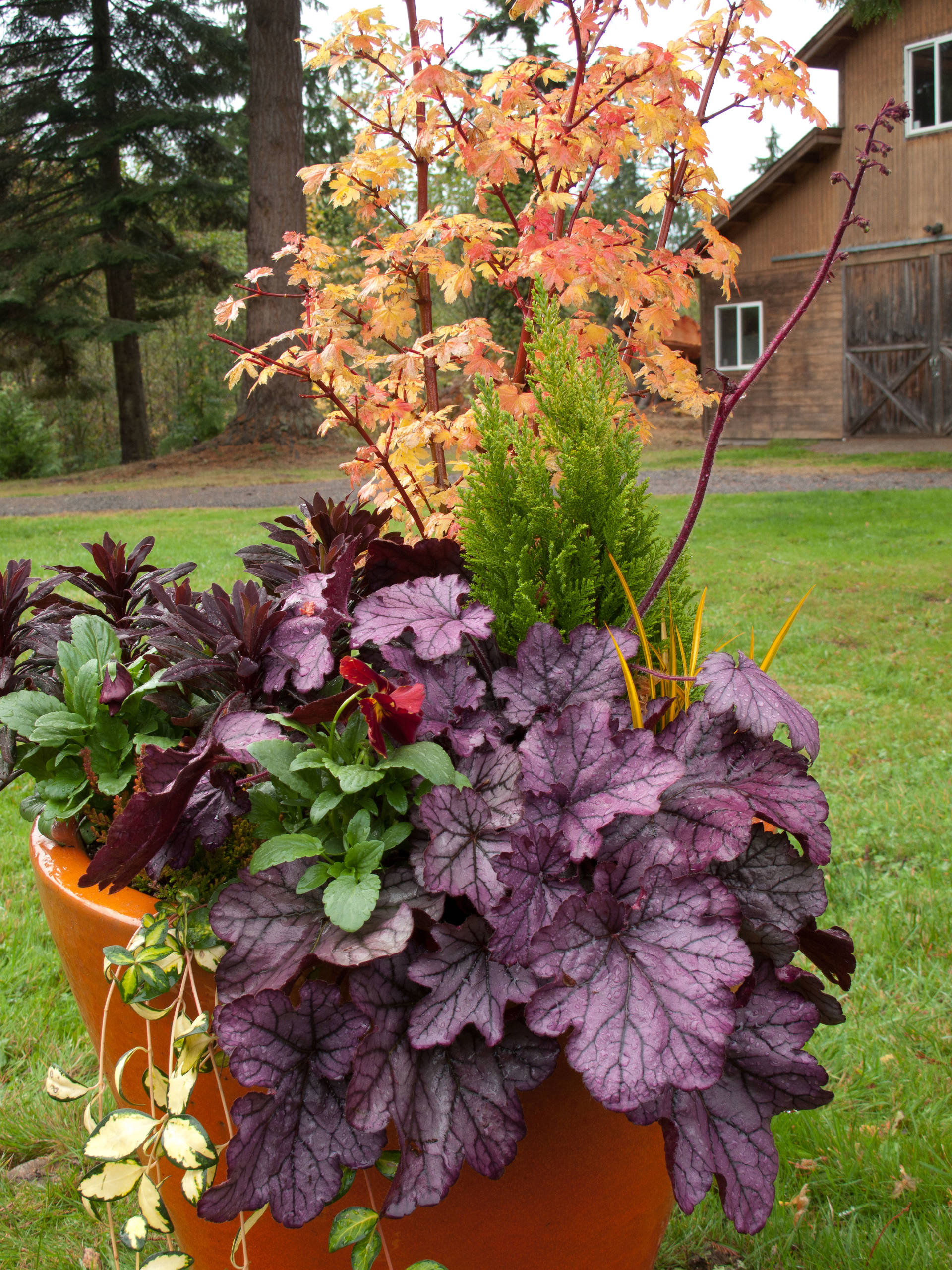 Le jardinet
Le jardinetDeepen existing container designs with the addition of one or more cool-tolerant, dark-leaved plants. In this design by Le jardinet, amethyst-colored ‘Spellbound’ coral bells (Heuchera ‘Spellbound’) and Ruby Glow spurge (Euphorbia amygdaloides ‘Waleuphglo’) add dramatic contrast to the golden orange leaves and red stems of the dwarf vine maple tree (Acer circinatum ‘Little Gem’).
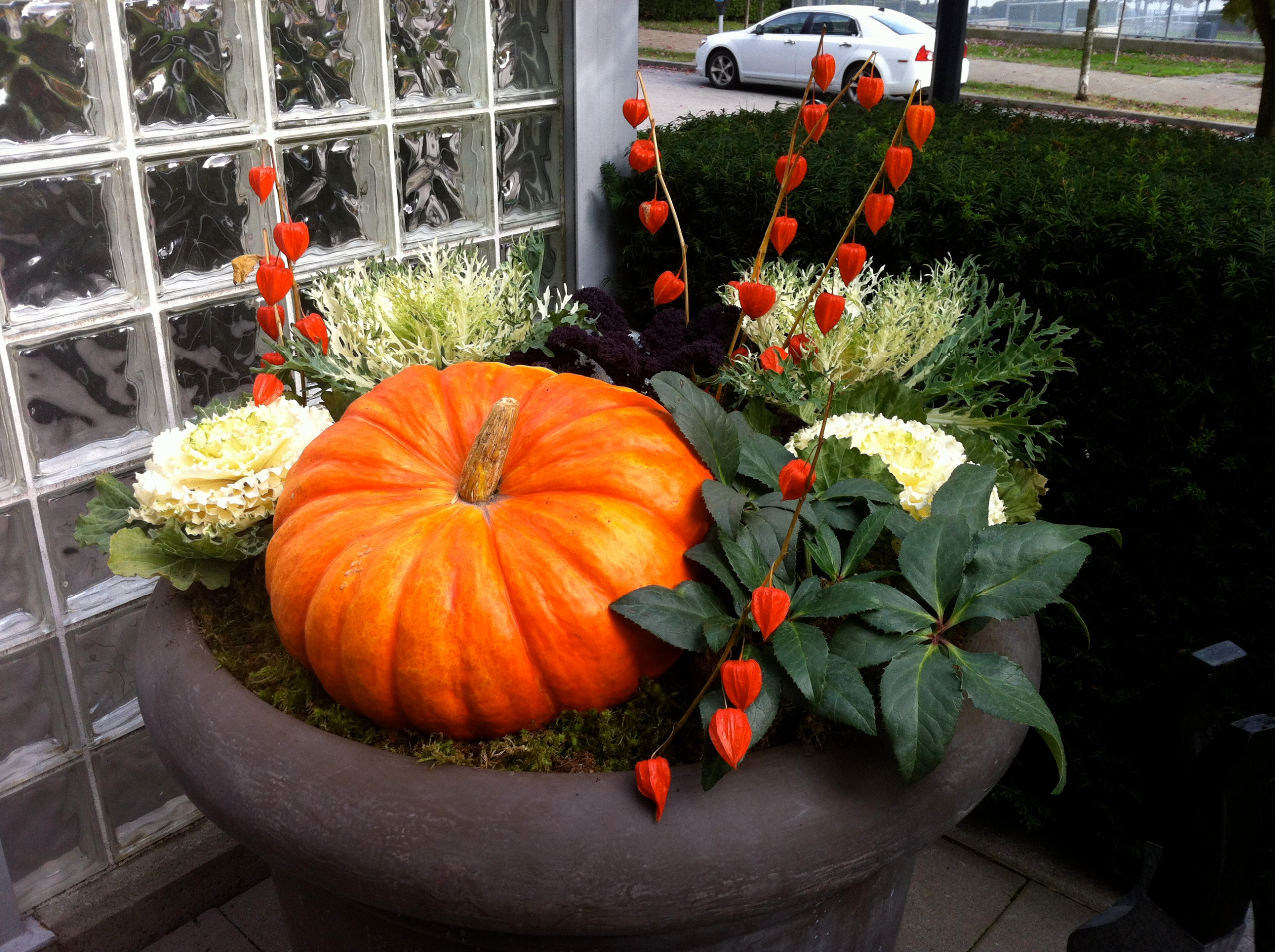 Glenna Partridge Garden Design
Glenna Partridge Garden DesignThis is a gardener’s hack, if we’ve ever seen one. If you’ve pulled out some tired-looking summer annuals but don’t have the time to hunt down a replacement plant, plunk a pumpkin down to cover the bare spot. Go for a classic deep orange pumpkin for a bright hit of color or pick out a knobby, fairytale pumpkin in an interesting shape. In this fall container, designer Glenna Partridge also tucked in a few cut stems of preserved Chinese lanterns (Physalis alkekengi), available from florists, for added whimsy.
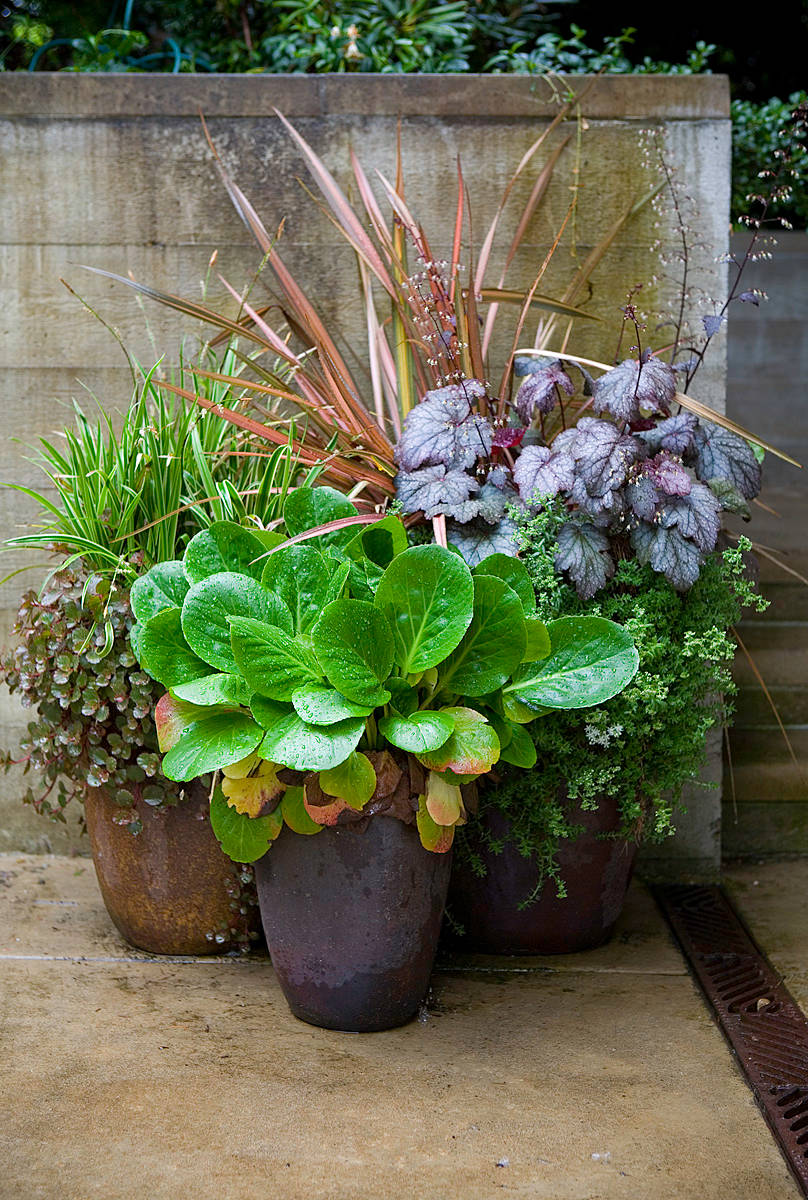 Kenneth Philp Landscape Architects
Kenneth Philp Landscape ArchitectsSometimes all containers need is a regrouping, rather than a replanting, for a fresh perspective. Take stock of all your potted plants and see which ones could work together as part of a fall container vignette. Do you have ornamental grasses in one pot that complement the leaf tones of a plant in a container across the yard? If the light requirements of the plants match, move the containers together as a combination.
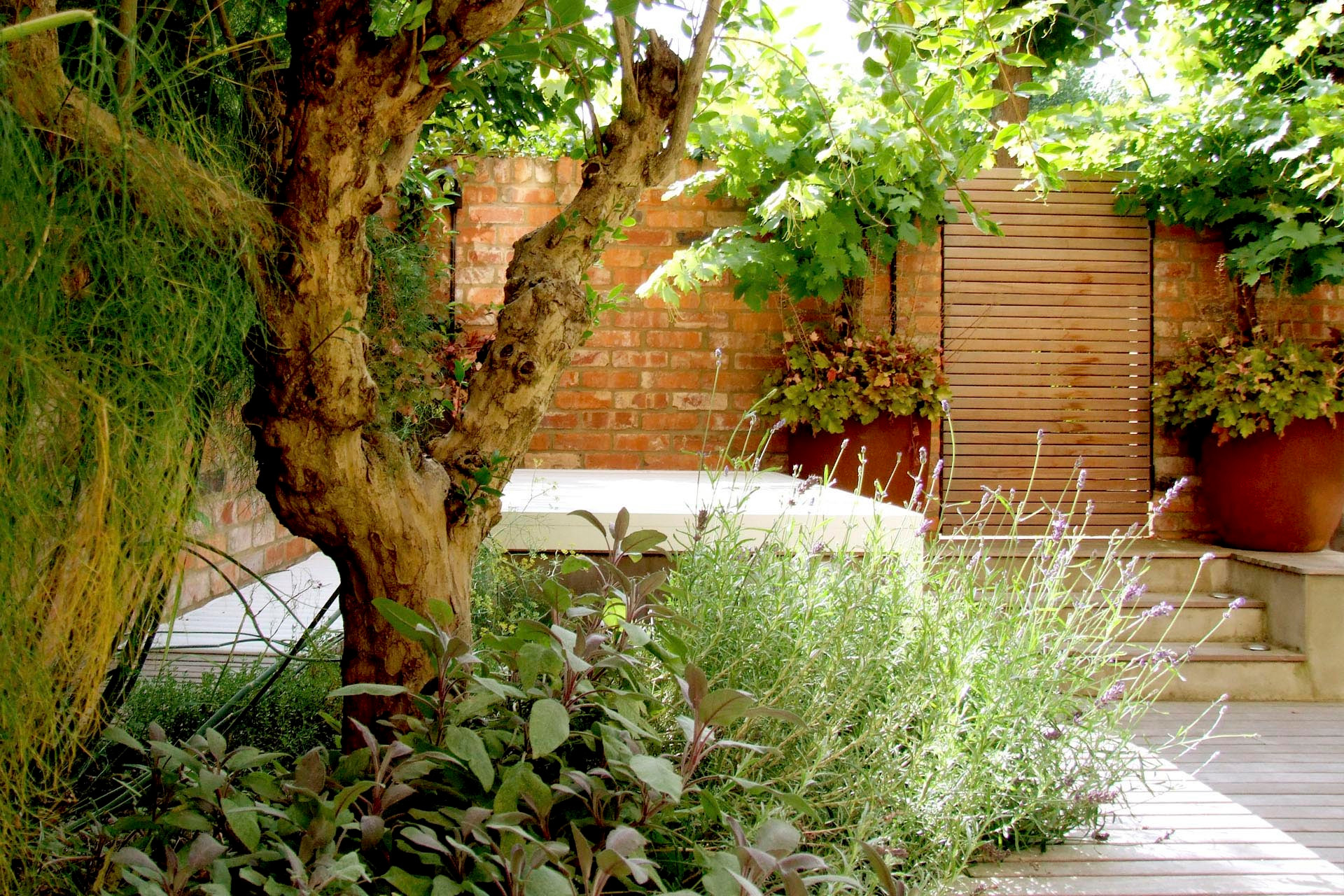 Adolfo Harrison Gardens
Adolfo Harrison GardensUpdate the look of containers with shrubs, small trees or mature vines without any major repotting by changing any low-growing plants beneath them. For example, take a look at the pair of potted grapevines framing the gate on this London terrace by Adolfo Harrison Gardens.
Without repotting the grapevines, you could achieve seasonal change by replacing the underplanting. Now the pots are planted with copper-leaved coral bells (Heuchera sp.), which work perfectly for fall — and will look even better once the grape leaves begin to turn color — and through winter. In spring, the coral bells could be traded for pastel pansies or white nemesia for a fresh new look.
 The Inspired Garden
The Inspired Garden

Swap tired warm-season flowers for richly colored foliage plants, leaving mature evergreens and long-lasting perennials in place. For example, this sizzling container by Glenna Partridge Garden Design in Vancouver, British Columbia, relies on a mature New Zealand flax (Phormium sp.) to add height to the design, with brightly colored foliage plants providing seasonal interest.
Here, wine-red coleus, golden Japanese forest grass (Hakonechloa macra) and zingy lime-green ornamental sweet potato vine (Ipomoea batatas) create a dramatic display. Although the coleus and sweet potato vine are not winter-hardy, they could be traded for coral bells or heather moving into the holidays.